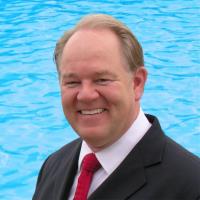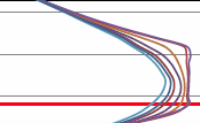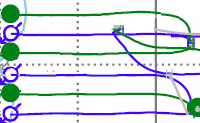Making more oil in a world where AI accelerates change like never before
 AI is accelerating change in our
society. Remember when landspeeders and hoverboards were just in the movies?
Now segways, e-bikes and scooters clog our sidewalks and streets for a little
more money than a ride on the bus. Cheap, fast mobility has come to Calgary’s
downtown core.
AI is accelerating change in our
society. Remember when landspeeders and hoverboards were just in the movies?
Now segways, e-bikes and scooters clog our sidewalks and streets for a little
more money than a ride on the bus. Cheap, fast mobility has come to Calgary’s
downtown core.
AI is accelerating change in the oil and
gas industry. Can we afford to be left behind? How will you keep up with the
change?
Without AppIntel AI, how will you know
when competitors make breakthroughs that increase production and reduce costs?
With AppIntel you can set alerts and watches to tell you by email about new
advances when they happen in the field. What if you could get an email every
time a competitor submitted a document with the words thermal bitumen or tight
flood.
One operator water flooded his fine grained Montney pool and is experiencing additional oil recovery. He speculates that water flood recovery could be as high as 40-55% in some strata.
Already oil and gas operators are copying this Montney success flagged by artificial intelligence.
See the details of his flood, his battles with competitors and the hurdles he has jumped in his submission documents. Get them from our self-serve portal.
Buy these submission docs now Subscribers get them for freeThis blog post supplied by Proven Reserves Exploitation Ltd. one of our data partners.
Quick Copy: Montney success flagged by artificial intelligence
Some operators are quickly copying his success and finding impressive flood recovery from this tight zone.
However jumping in with both feet before reviewing the experience from other operators may hurt your operation. Another operator shows the unfortunate lessons learned in his Montney flood experience.
?subject=I want just a few hit alerts&body=Sign me up for a few hit alerts by email. %0D%0A%0D%0AMy Name:___%0D%0AMy Phone Number:___%0D%0A%0D%0ASearch terms_______%0D%0A%0D%0APricing: www.appintel.info/just-alerts/%0D%0A%0D%0A(Or call AppIntel Sales at 403-803-2500.)">Contact us now to buy just a few cheap and cheery hit alerts.
Suspicious offsets are objecting: putting on the brakes
Offsetting operators are wary of the success seen in this flood. Their objections have thrown up hurdles that has slowed the operator’s plans. In the submission documents, you can see all their concerns and the stipulations required by the regulator to appease them.
How would you dodge these bullets?
Floods are old technology. Done poorly.
Even though floods have been around since early last century, they can still make a big difference even in newly discovered tight pools.
However, most floods are run very poorly. Legacy floods and new floods suffer from poor balancing, technical debt and first generation horizontal wells.
Too many floods are started and then ignored. Most floods in Canada haven’t been optimized in a decade. Due to this, the prize of higher recovery and better production are forfeit.
First generation horizontal wells are the wrong wells to use for flooding
First generation horizontal wells drilled and fracked without regard to directional permeability, swept zones, fluid contacts will always cause floods to fail.
If all reservoirs were homogeneous and secondary porosity was never a concern, horizontal injectors would be a perfect solution. Water would evenly flow from injector horizontal producer.
However in real, non-perfect reservoirs water might short circuit from injector to producer causing conformance and sweep problems.

Reservoir engineering is dead. Long live reservoir engineering.
The study of conventional reservoir engineering was once about increasing oil and gas recovery from the formation. Now most ignore this discipline believing instead that “more fracks win”.
The science is dusty that involved drilling for highest permeability, volumetrics, material balance, avoiding fluid contacts, and reducing residual oil saturation. This science controlled well placement, drilling azimuth, well density, the worth of stimulation, injector location, formation sweep and more.
Few practice or even understand the principles of enhanced recovery. Subsequently many oil reservoirs under-perform.
Tight floods can work surprisingly well
Much has been written on the subject of tight floods in the last ten years as shown in industry submissions. Operators are flooding tight sands using water, natural gas, and water-and-gas (WAG) technology.
Some operators are claiming large recoveries from these tight rocks between 25% and 65%. Some see flooding tight rock as revolutionary. Some see the changes as incremental, evolutionary methods. Proven believes there are essential systems for improving floods in tight rock.

Technical debt negatively impacts tight floods
The technical debt of a legacy floods is the cost of the lost production that could have turned into cash flow.
Most operators used the set and forget method of initiating a water flood. The neglect created a technical debt that is costing the industry in Alberta $10 billion this year.
Floods must be optimized
Whether in tight rock or in legacy conventional reservoirs, floods must be optimized at least yearly to continue to produce incremental oil and reduce operating costs. Procrastinating flood optimization creates a technical debt that you will pay for decades.
For every month an operator puts off optimizing her flood she forfeits the opportunity cost of half a million dollars per month or 300 bopd. The opportunity cost is the lost cash flow from deciding not to optimize a flood. How many months are you willing to pay this opportunity cost?
Unfortunately there are very few flood engineers left.
Have Proven optimize your flood
Part of Proven's skill set is fixing the technical debt of legacy floods.
If you have a waterflood problem like declining production, climbing water cut, injectivity problems, or new injection with immediate breakthrough have Proven solve the problem.
Upgrade your flood with Optiflood - it is the cheapest production and reserve adds in the basin.
Without Optiflood, how can you be sure you are getting the most out of your waterflood?
Proven's Flood Track Record
| 50 | Floods started |
| 200 | Floods improved |
| 400 | Hours teaching oil and gas at U of C |
| 500 | Oil & gas articles written |
| 1000 | Applications submitted |
| 95% | Successfully added $20 million in reserve value with floods reviewed |
?subject=Help me improve my flood using Optiflood&body=Help me improve my flood using Optiflood. I understand Optiflood is a process that incorporates learnings from improving 200 floods.%0D%0A%0D%0AMy Name ________________%0D%0AMy Phone number _____________%0D%0AField ______________%0D%0APool_______________%0D%0A(Or call Proven Sales at 403-803-2500.)">Contact Proven for their experience at using Optiflood to improve over 200 floods.
Tags: Tight, Flood, AI in oil and gas, AI return on investment
 Granger Low 21 May 2025
Granger Low 21 May 2025

Steam surfactant co-injection
Want to win? What is your competitive advantage?

Surprise! Sour gas production from a sweet thermal scheme
Dealing with surprises in the oil and gas industry. What to do next.

10 ways to increase production before Christmas - Infographic
For your wall to remind you

10 ways to increase production before Christmas
Each cost less than half a million

Using AI to reduce risk of oil and gas failure
How can you assess the risk without knowing the epic fails?

Artificial intelligence using vetted oil and gas information
Using anything else is dangerous

Your AI search history is being sold to your competitors
Your use of AI is not free

Smarter acquisitions
Video demo on using the KiP box for acquisitions

AI alerts increase the speed of innovation
AI launches oil and gas operators from rival wins

Elusive promise of ASP flooding
This one's ending

SAGD Blowdown Experiment
Shows his unexpected results

Selfie-mail: emails to myself
I send more emails to myself than to any other person.

Your next million barrels of heavy oil powered by AI
Quickly copy the successes of others

Shared: powerful side by side comparison of before and after polymer flood
Six fold oil production increase

Four ways your flood is crying for help
Can you hear it?

Great oil and gas operators don't just wing it — they focus
From uncertainty to control in One Day using AppIntel AI

Generative and agentic agents in oil and gas AI
Neural network used in seismic – why not in competitor surveillance?

AppIntel AI blog delivering over 50,000 pages views per month
Artificial Intelligence for the oil and gas industry

The making of an oil and gas AI.
Decoding the building blocks of Artificial Intelligence





 Calgary, Alberta, Canada
Calgary, Alberta, Canada
 Share
Share